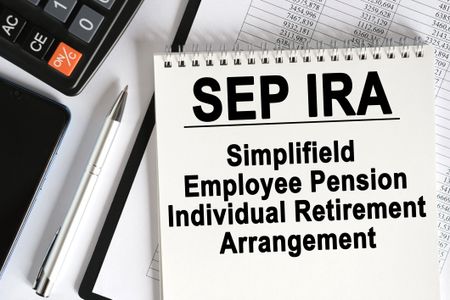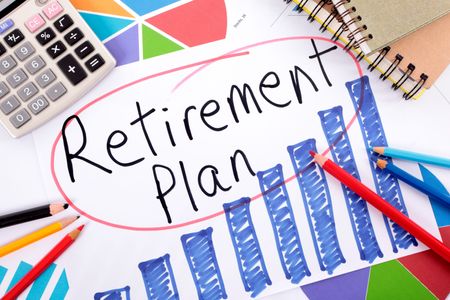Ease the Way From Work to Retirement
Phased retirement programs help companies retain experienced workers and let employees scale back working hours to explore other interests.

As baby boomers hit retirement age, many are realizing they're not quite ready to quit work cold turkey. Whether you're worried about the size of your nest egg, leaving unfinished projects at the office or simply filling up the hours of the day, an abrupt shift from corner office to golf course can seem a daunting proposition.
Such concerns are leading more and more boomers to blur the traditionally sharp boundaries between work and retirement. With help from employers, they're seeking out "phased retirement" arrangements that allow them to scale back their working hours and explore other interests while maintaining workplace benefits and giving their savings more time to grow.
Many older workers want "a gentler transition into something we all know is a major lifestyle change," says Paula Sanders, vice provost for academic affairs at Rice University, in Houston. The university this year instituted a phased retirement program for faculty.

Sign up for Kiplinger’s Free E-Newsletters
Profit and prosper with the best of expert advice on investing, taxes, retirement, personal finance and more - straight to your e-mail.
Profit and prosper with the best of expert advice - straight to your e-mail.
There's no strict definition of phased retirement, and many employers strike these arrangements with workers one-on-one rather than setting up formal programs. That's changing. The federal government is currently developing a phased retirement program for its workers. More than half of employers surveyed by the Families and Work Institute last year allow at least some employees to work reduced hours over a period before full retirement. And 36% of employers surveyed by consulting firm Aon Hewitt said they're likely to evaluate phased retirement programs this year, up from 30% in 2012.
For employers, phased retirement programs can help retain skilled, experienced workers who might otherwise opt for full retirement. It also provides time for those workers to mentor younger employees. And phased retirement can be ideal for employees looking to stay engaged with the working world and boost retirement savings while also freeing up time for caregiving, volunteer work, travel and other pursuits.
But before you strike a deal with your employer, there are a host of factors to consider. You'll want to ensure that you can afford a reduction in your paycheck, that your hours and responsibilities will be scaled back in a way that matches your reduced compensation, and that you understand how your pension and other workplace benefits will be affected.
Phased retirement programs have been around for years, and they were growing in popularity until the financial crisis dampened both employers' and employees' enthusiasm for the arrangements. But the programs are again on the rise as companies see a retirement wave on the horizon and as older workers anticipating ever-greater longevity find that they're able to stay productive longer. As the economy picks up, more employers are likely to embrace the programs because they're "thinking harder about what they can do to keep people around," says Bob Leone, senior partner in the retirement practice at Aon Hewitt. "They'll need to get creative in order to retain talent."
David Drees, 59, of Columbus, Ohio, is one worker eager to have the option of phasing into retirement. A contract specialist for the Defense Logistics Agency, Drees says he was excited to hear about the federal government's plans to offer a phased retirement program. "Easing into retirement, I could do three days a week or two days a week and be off the rest of the time and get used to that," he says. With the extra free time, he says, he might volunteer, take courses at a local college and get away for long weekends with his wife.
As you explore your phased retirement options, you will need to answer the following questions.
Rigid rules or flexible design? Before raising your hand for phased retirement, consider whether your employer will be dictating your schedule and responsibilities or whether you have some ability to design your own phaseout plan—and change your mind along the way. The flexibility of phased retirement programs and workers' ability to negotiate the terms of these arrangements vary widely from one employer to the next.
Intuitive Research and Technology Corp., in Huntsville, Ala., for example, is focused on retaining experienced workers with the specialized skills needed for the engineering and analytical contracting it provides to Defense Department customers—and that means offering all sorts of flexible work schedules, says Juanita Phillips, director of human resources. About 7% to 8% of the workforce is in some sort of phased retirement program, she says. Some of these workers sign on for specific projects, while others may work many hours for a few weeks and then be off for nine months. And the phased retirement arrangements are open-ended, with no required retirement date.
Faculty entering Rice’s new phased retirement program, however, sign an irrevocable agreement and follow a set schedule that leads to full retirement in one to three years. Participants take on 50% of a full-time workload, receiving 80% of salary in the first year, 70% in the second and 50% in the third. Once in the program, faculty can fully retire sooner than the contract dictates, but they can't extend the phaseout period, says Sanders, the vice provost.
Phased retirement programs may also require participants to take on new responsibilities—usually focused on transferring skills to the next generation of workers. Under regulations proposed this summer by the Office of Personnel Management for the federal government phased retirement program, participants will work half-time and spend at least 20% of their working hours mentoring other employees.
Can you afford to phase out? Taking a pay cut in exchange for some extra free time may seem frightening for workers in their late fifties or sixties. But a variety of approaches can make phased retirement affordable and bring long-term benefits to your nest egg.
Using a concept it calls "practice retirement," for example, T. Rowe Price suggests that preretirees consider easing into retirement by halting retirement-plan contributions and delaying Social Security while continuing to work at least part time.
An example from T. Rowe Price shows how a couple practicing retirement can benefit financially by choosing an extended phased retirement over working full time until normal retirement age. A 60-year-old couple has $500,000 in retirement savings and income of $100,000, and they've been saving 15% of salary in their 401(k) plans. They both want to enjoy their sixties and would like to fully retire soon—but they're also willing to consider semi-retirement.
One option: They stop retirement-plan contributions at age 62 but work full time until age 66. During those four years, they could use the extra money to travel or engage in other retirement-type pursuits. At 66, they claim Social Security and start drawing roughly 4% from their retirement accounts. This would give them annual retirement income of $67,900 and a savings balance at retirement of $665,400.
If they instead pursue a phased retirement, by stopping retirement-plan contributions at age 62, working part time from age 62 to 70 and claiming Social Security at age 70, they see multiple benefits. Although their salary is reduced, the fact that they've stopped contributions gives them some extra money to play with. Because their Social Security benefits grow each year that they delay claiming, and they avoid tapping their savings for an additional four years, their annual retirement income jumps to $89,000. What's more, their savings at full retirement total $775,000—16% more than if they had both fully retired at 66.
Will your pension or 401(k) be affected? Rule changes in recent years have helped pave the way for phased retirement. The Pension Protection Act of 2006 allowed pension plans to pay benefits to active workers who are 62 or older. While receiving a portion of your pension can help supplement your income as you cut back your hours, participant advocates raise concerns about how phased retirement may affect pension benefits and long-term retirement security.
If you start drawing benefits early, your pension annuity may be substantially reduced, and "how is that going to affect people later in life when they're 75 and their retirement benefits are lower?" asks Norman Stein, law professor at Drexel University. And in some pension plans, your benefit is based on your average pay in your final working years—so working part time during those years could slash your benefit.
[page break]
No matter how your plan is structured, make sure you understand phased retirement's potential impact on your lifetime income. Ask about any partial pension you may be eligible for now and what that means in terms of your full pension when you ultimately retire, says Sara Rix, senior strategic policy adviser at AARP’s Public Policy Institute.
Depending on plan rules, participants in 401(k) plans may be able to tap these savings after age 59 1/2 without penalty, even if they're still working. You'll do your nest egg a favor, of course, if you leave these funds untouched. And if you decide to scale back retirement-plan contributions, perhaps using some of that cash to pay down debt or pursue other interests, don't leave free money on the table. Contribute enough to the 401(k) to get the employer matching contribution. However, rules vary from plan to plan, so ask whether scaling back your hours may affect your eligibility for the matching contribution.
What's the impact on Social Security? Carefully consider whether Social Security benefits should help supplement your income as your paycheck shrinks. Although you'll maximize your benefit if you delay claiming until age 70, many people find that claiming earlier gives them the breathing room they need to pursue a more flexible work schedule.
In the past couple of years, Peter Sarver, 67, a housing program manager in Syracuse, N.Y., has reduced his work schedule from the traditional 40 hours a week to 80% and then 60% of full time. He claimed Social Security at age 65. "Frankly that did give me the flexibility to be more playful with my work commitments," he says. "The Social Security made a huge difference."
For married couples, "maybe the higher income earner could put off Social Security as long as possible, and the lower income earner could have the flexibility to take Social Security benefits" earlier, says Judith Ward, a senior financial planner at T. Rowe Price. "That's a compromise to consider."
If you claim Social Security before your normal retirement age (66 for those born between 1943 and 1954), and your earnings are above a certain level, a portion of your benefit will be withheld. For people subject to this "earnings test," Social Security in 2013 will withhold $1 in benefits for every $2 you earn above $15,120 (see A Paycheck's Impact on Retirement Income Benefits). Also remember that Social Security calculates your benefit based on your 35 highest-earning years—so a pay cut during your phased retirement period could affect your benefit.
Can you still get workplace benefits? Before reducing your hours, ask whether the move will have an impact on your employer-provided health coverage. Intuitive Research, for example, only pays for health coverage if an employee works more than 30 hours per week, Phillips says. At Rice, however, phased retirees remain fully eligible for health coverage.
Under the new health care overhaul law, larger employers in 2015 must cover employees who work 30 or more hours per week, or pay a penalty. Regardless of whether an employer chooses to offer coverage to employees working fewer than 30 hours per week, the new health law should "solve some of the problems" with phased retirement, says Pamela Perun, a retirement-policy consultant in Nantucket, Mass. Many older workers have avoided pursuing reduced work schedules for fear of losing their workplace health coverage. On the new state-based health exchanges, older workers who lose workplace insurance may be able to get more affordable coverage than was traditionally available to them on the individual market.
Also consider phased retirement's impact on employer-provided life insurance and disability coverage. Payouts may be based on your reduced salary during the period of your phased retirement. Or, depending on how much you reduce your hours, disability coverage "may go away completely," says Anna Rappaport, chair of the Society of Actuaries' committee on post-retirement needs and risks. That may be a big stumbling block for people who are considering phased retirement because of health concerns.
Can you make the pitch for phasing out? If your company doesn't offer phased retirement, here's some good news: Employers can be persuaded. At Rice, for example, the phased retirement program was developed in response to a request from faculty, Sanders says. When making your pitch, discuss how the move might be beneficial to your employer, and demonstrate that you "want to leave the organization with an effective transition" to your successor, says Aon Hewitt's Leone. If you can make your case alongside several other employees who are also approaching retirement age, he says, you'll likely be even more persuasive.
However, there is a risk, Leone says, that workers stepping forward for phased retirement could be laid off in tough economic times. Be particularly wary "if it's a company that has no alternative work options," Rappaport says.
Phased retirement may be an easy sell, though, if you have a flexible employer that clearly values your skills and may have trouble replacing you. Sarver, the housing program manager, says he had no trouble persuading his employer to let him work a reduced schedule. He had previously served on the organization's board of directors, and "people knew my capabilities," he says. Now, Sarver has the time to teach courses at nearby colleges and to think about taking a trip to Africa next year. In his view, "people shouldn't fear phased retirement," Sarver says. "Folks who are open to embracing new opportunities really ought to go for it and enjoy themselves."
Haven't yet filed for Social Security? Create a personalized strategy to maximize your lifetime income from Social Security. Order Kiplinger’s Social Security Solutions today.
Get Kiplinger Today newsletter — free
Profit and prosper with the best of Kiplinger's advice on investing, taxes, retirement, personal finance and much more. Delivered daily. Enter your email in the box and click Sign Me Up.

-
 You Don’t Want to Retire in Portugal: Here Are Three Tax Reasons Why
You Don’t Want to Retire in Portugal: Here Are Three Tax Reasons WhyRetirement Taxes With the NHR benefit retiring and pension taxes increasing, you might rethink your retirement plans in Portugal.
By Kate Schubel Published
-
 Home Depot's Winning Ways Fueled Its 100,000% Return
Home Depot's Winning Ways Fueled Its 100,000% ReturnHome Depot's wide moat leaves little room for competition – and shareholders have profited as a result.
By Louis Navellier Published
-
 457 Plan Contribution Limits for 2025
457 Plan Contribution Limits for 2025Retirement plans There are higher 457 plan contribution limits for state and local government workers in 2025. That's good news for state and local government employees
By Kathryn Pomroy Last updated
-
 Medicare Basics: 11 Things You Need to Know
Medicare Basics: 11 Things You Need to KnowMedicare There's Medicare Part A, Part B, Part D, Medigap plans, Medicare Advantage plans and so on. We sort out the confusion about signing up for Medicare — and much more.
By Catherine Siskos Last updated
-
 The Seven Worst Assets to Leave Your Kids or Grandkids
The Seven Worst Assets to Leave Your Kids or Grandkidsinheritance Leaving these assets to your loved ones may be more trouble than it’s worth. Here's how to avoid adding to their grief after you're gone.
By David Rodeck Last updated
-
 SEP IRA Contribution Limits for 2025
SEP IRA Contribution Limits for 2025SEP IRA A good option for small business owners, SEP IRAs allow individual annual contributions of as much as $69,000 in 2024 and $70,000 in 2025..
By Jackie Stewart Last updated
-
 Roth IRA Contribution Limits for 2025
Roth IRA Contribution Limits for 2025Roth IRAs Roth IRA contribution limits have gone up. Here's what you need to know.
By Jackie Stewart Last updated
-
 SIMPLE IRA Contribution Limits for 2025
SIMPLE IRA Contribution Limits for 2025simple IRA The SIMPLE IRA contribution limit increased by $500 for 2025. Workers at small businesses can contribute up to $16,500 or $20,000 if 50 or over and $21,750 if 60-63.
By Jackie Stewart Last updated
-
 457 Contribution Limits for 2024
457 Contribution Limits for 2024retirement plans State and local government workers can contribute more to their 457 plans in 2024 than in 2023.
By Jackie Stewart Published
-
 Roth 401(k) Contribution Limits for 2025
Roth 401(k) Contribution Limits for 2025retirement plans The Roth 401(k) contribution limit for 2025 increased, and workers who are 50 and older can save even more.
By Jackie Stewart Last updated